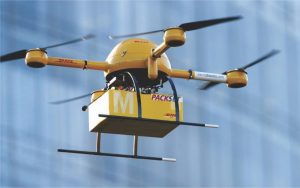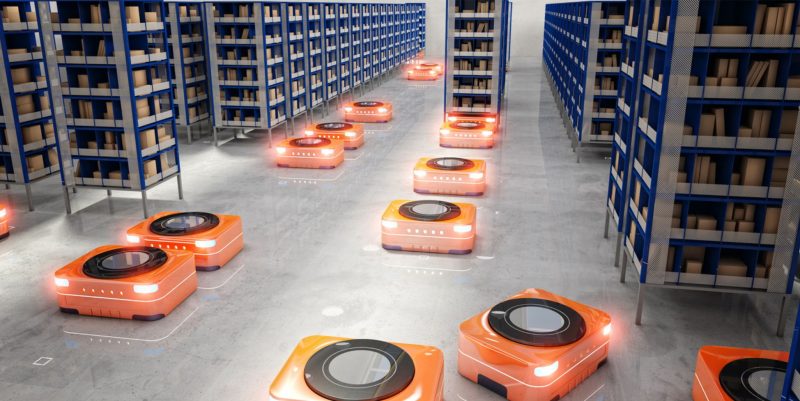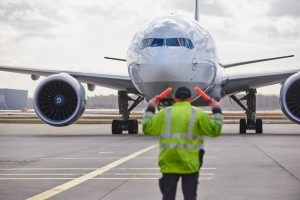Over the last 30 years, logistics and supply chain management in the GCC had seen significant transformations that have completely changed the way the industry functions.This article focuses on certain individual business functions and show the way business needs and skill sets have evolved due to constant innovation and technological advancements.
Documentation
Looking back 30 years, one can safely say that documentation was one of the most important functions in the logistics and supply chain industry. The whole process of shipping goods from one point to another was supported by a web of complex documentation that required the right expertise and know-how. In short, this business function was extremely people-centric.
 Experienced staff with the working knowledge of documentation were often some of the most highly-paid professionals in the industry and were considered an asset to the company. However, these professionals were regarded as experts based on the many hours they spent on documentation rather than on productivity.
Experienced staff with the working knowledge of documentation were often some of the most highly-paid professionals in the industry and were considered an asset to the company. However, these professionals were regarded as experts based on the many hours they spent on documentation rather than on productivity.
Cut to 2018 and documentation only requires trained, semi-skilled professionals on industry-standard systems which call for a few basic entries into an interface and one click of a button. Over the last few years, documentation has gone from being an industry unto itself to an asinine sub-function with little or no human intervention.
Transportation
Transportation is one business function that has seen disruption on a global scale. In emerging markets like the GCC, this business function has seen three waves of trans-formation.
In the early days, transportation as a business relied on personal relationships between companies and transporters. The impact of cost control and consolidation were never really considered in the larger scheme of things.Productivity and asset utilization were secondary factors as long as business was regular. Monitoring systems were rudimentary. Focus was only on availability, and a few large players completely dominated the industry.
In the post 2008 era, transportation suddenly became a focus area to reduce overheads and improve efficiency. What this wave brought, was a host of cheaper mobile operators with little expertise, lack of reliability, technical skills and poor service delivery. What began as an endeavor to reduce costs ended up having a negative effect, thereby, creating an unprofessional parallel industry structure with very little regulation and oversight.
 In the last few years, however, we have seen this imbalance being correct through technology. The uberization of the transportation industry has ensured a fair degree of standardization of services and smaller players are able to thrive and grow. The emergence of new transportation systems such as drones has further incentivized new players to enter the industry. Additionally, the focus is on achieving a holistic balance between cost and efficiency which has benefited the industry as a whole and weeded out inferior players to a large extent.
In the last few years, however, we have seen this imbalance being correct through technology. The uberization of the transportation industry has ensured a fair degree of standardization of services and smaller players are able to thrive and grow. The emergence of new transportation systems such as drones has further incentivized new players to enter the industry. Additionally, the focus is on achieving a holistic balance between cost and efficiency which has benefited the industry as a whole and weeded out inferior players to a large extent.
Warehousing
Wareh3ousing is one function that has in our opinion benefited the most from innovation. When the logistics industry was just taking root in the GCC, what we know as warehouses today were simply known as Go-downs, as in a place to go down and store goods.
As the market grew and the scope of industries requiring storage facilities expanded, the modern-day warehouse was born.With the needs of business getting more time-bound and with focus shifting towards proper handling of goods such as pharma or agri-products, the creation of a more skilled workforce to monitor these changing needs was felt.
This led to the emergence of a category of mid-level executives who oversee warehousing functions still handled by a largely under-skilled workforce. It is estimated that over 60% of the costs are dedicated to maintaining this new category of employees. However, lack of opportunities for ground-level staff has seen this industry stagnate, thereby creating an opportunity for disruption.
Companies like Amazon have taken a rather extreme view on warehousing by investing heavily in automation. Their fulfillment centers typically require a smallforce of semi-skilled workers who can function with minimal oversight through the use of automation and robotics for every function from storage to sorting and picking. This is the direction that the industry seems to be heading in and there is an urgent need to address the challenges for the current workforce.
Distribution
Earlier, “Scheduling” was the buzzword in distribution. It was a simple yet effective system of doing business where customers had a fairly comfortable window in which their delivery schedules could be fit and the further handling of goods could be planned accordingly.
Globalization, change in consumer behavior and the advent of eCommerce challenged the entire global supply chain with the idea of handling a very large volume of new SKUs giving rise to the concept of time-bound deliveries.Planners and distribution experts relied heavily on technology to improve efficiency. Distribution has now subsumed warehousing and transportation and where’First past the post’has become the motto.
Our analysis of the changes in the Logistics industry shows that the future holds promise with the advent of new paradigm. Even government entities like customs are stepping in to meet the changing requirements by means of Smart clearance systems. There is talk of autonomous vehicles and hyperloops for both passenger and cargo. AI and Blockchain coupled with Big Data analysis are changing the way business is done. Niche new industries such as 3D printing are finding more use cases.
Preparing a workforce that is future-ready is only one part of the challenge. This is a time to discuss, deliberate and chart out a new framework of the future of logistics and supply chain. Every hand that can help as a mentor, innovator and contributor is welcome in this journey. Join us, won’t you?
Whether it’s about passenger, cargo or airport growth, Middle East carriers have stood up to the challenge capitalizing on their strategic position as the gateway between the East & the West.
Saudi Arabian Airlines or Saudia is one of them, making enormous strides and consolidating on markets where it is strong.
Vikram Vohra, Regional Director Asia Pacific of Saudia Cargo, who shared some of his insights in this very dynamic industry, told Air Cargo Update: “The Saudia brand is well established in the region. We are running good capacities from South Asia, Africa and Saudi Arabia itself. We will further consolidate on our position, coming out with innovative products & solutions.”
Optimising capacity
Vohra said the company’s core strategy is to grow on its strength which involves “optimizing the capacity and expanding its strong network” with quality offerings.
“Saudia will be expanding its cargo carrying capacities in the field of pharmaceuticals and perishables. We will be further improving our processes and also strengthening our temperature controlled systems as to give the best to the highly demanding pharma and perishables industry,” said the cargo executive who is based in India.
From India, Saudia carries mix products that include perishables, pharma, automotive, oil and gas, machineries and equipment, etc.
e-Commerce growth driver
With e-Commerce becoming a major driver of the cargo segment, Saudia sees enormous potential for growth, in the region of about 30 percent.
“We are changing our schedules to accommodate e-commerce. China and Hongkong are driving e-commerce segment and many a time the segment is not been served well due to poor capacities. We are having daily flights connecting many destinations as ‘time’ is at a premium.”
This year, Saudia will concentrate on improving its frequencies/schedules connecting the Middle East with South Asia and Africa.
“Our (Saudi Arabia) domestic market is huge and we are developing hubs in Riyadh, Dammam and Jeddah. There is so much demand for pharma within Saudi Arabia that we will focus on addressing that need. Similarly, we will continue to move general pharma into Africa from India. A number of big Indian pharmaceutical companies are involved in supply pharmaceuticals through the World Health Organisation (WHO) and the United Nations,” said Vohra.
Saudia is bullish
Saudia is optimistic about the future of the global cargo industry with statistics pointing to more growth.
“We are quite bullish about the global cargo market. We will be doing marginally above 2017 results. We are talking to different big players on movement of cargo in India and the Far East,” said Vohra.
“Korea is one of our strong markets. It is high on our agenda. Bangladesh is one of our biggest partners. We primarily move textiles and other products from Bangladesh, a country which accounts for 25 per cent of South Asia’s revenues. We run five freighters to Bangladesh on a weekly basis which is indicative of its importance,” he added.
With the United Kingdom lifting ban on imports from Bangladesh, Saudia sees further opportunities, while it will strengthen safety & security systems.
Vohra said Saudia sees security and safety of cargo as among their biggest challenges, thus, is investing on improving its IT infrastructure, data quality, cold storage facilities and cargo village.
Saudia is also known for its out of the box solutions. It recently introduced the ‘Fly Box’ product which is tailor-made for Filipinos returning home after working in the Middle East. This has helped many Filipinos take most of their belongings back to the Philippines.
“Innovation is the key and we are constantly looking at improving our services to the customer, though we still remain an airport to airport carrier,” said Vohra.
The global aviation industry saw a record over 4 billion passenger traffic in 2017 but with international travel forecasts to grow at 8.4 percent this year that figure may swell to a new high.
Airports in different parts of the world are racing against time to adequately cope with the rising number of passengers, investing heavily on smart security, technology and digitalization and embracing innovations in various areas to speed up processing time without compromising security and convenience of passengers.
In the Middle East, the United Arab Emirates (UAE), home to the one of the world’s biggest airlines, Emirates, is leading in terms of exponential growth in airports with 37 planes arriving every hour at the Dubai International Airport (DXB) and 41 aircraft leaving every 60 minutes, according to its operator, Dubai Airports.
In 2017, annual traffic at DXB reached 88.2 million, keeping its position as the world’s number one airport for international passengers for the 4th consecutive year. It welcomed six new scheduled passenger airlines during the year— SalamAir, Badr Airlines, and Air Moldova, while home based carriers Emirates and flydubai added 3 and 10 new passenger destinations and increased frequency/capacity on 31 and 22 routes, respectively.
DXB projects its passenger traffic in 2018 to reach over 90 million eventually rising to 118 million in the years ahead.
In the region, Turkey is aggressively competing with the UAE in the aviation industry with Turkish Airlines becoming more popular globally, closing 2017 with nearly US$1 billion in profits.
Turkey’s Ataturk International Airport handles more than 63 million passengers annually. This year, the country is scheduled to open a new airport—Istanbul New Airport— described as the biggest in the world with ultra modern features and even capable of thwarting security threats as was the case in Ataturk in 2016 that resulted to the death of over 40 people and injuring nearly 250.
 Saudi Arabia is also heavily investing on aviation, transport and other industries amid a widespread initiative for economic reforms in the Kingdom. Saudi Arabian Airlines, the flag carrier, opened in December of 2017 a city terminal check-in facility enabling passengers to skip long queues at the King Abdulaziz International Airport in Jeddah.
Saudi Arabia is also heavily investing on aviation, transport and other industries amid a widespread initiative for economic reforms in the Kingdom. Saudi Arabian Airlines, the flag carrier, opened in December of 2017 a city terminal check-in facility enabling passengers to skip long queues at the King Abdulaziz International Airport in Jeddah.
The kingdom is also carrying out expansion at its main international airport with capacity to service 70 aircraft simultaneously, featuring (3,700) prayer rooms, a 4-star hotel, a 14-meter-high aquarium, (299) elevators, 18,000 square meters of internal green spaces and 28,000 square meters of retail spaces.
Jordan, Kuwait and Egypt are similarly expanding their aviation industry through liberalization policies and enjoining investments from the private sector.
Biggest airport show
Held under the patronage of H.H. Sheikh Ahmed bin Saeed Al Maktoum, President of the Dubai Civil Aviation Authority, Chairman of Dubai Airports, Chairman and Chief Executive of Emirates Airline and Group, the Airport Show 2018 promises to be the most important event of its kind with leading international suppliers of the most advanced airport solutions participating.
“Through the solid support from both government and private sectors, the 18th edition of Airport Show will continue to offer our airport development teams and colleagues around the region an invaluable opportunity to view the latest global technologies, meet aviation experts from around the world and share ideas, best practices and create new opportunities for our industry to collaborate,” Reed Exhibitions, the Airport Show organizer said.
The B2B event draws more than 350 exhibitors from over 80 countries annually with thousands of unique visitors from the Middle East, Africa and South Asia’s growing aviation industry.
Security continues to play an increasingly important role as airports remain keen to accelerate their outputs while enhancing their customer experience.
Airport Show’s 18th edition will have co-located events—the Air Traffic Control Forum; Airport Security Middle East; the CAPA (Center for Aviation) Global Airport Leaders Forum, and; Women in Aviation.
Organizer said the most future proof airport security products and services from around the world will be on display at the event happening on May 7-9, 2018 at the Dubai International Convention Exhibition Center.
Experts said about US$100 billion worth of airport-related projects are planned & underway across the Middle East & North Africa (MENA) region.
Ali Al Hamdany, CEO, Fly Baghdad
In 2003, the US-led invasion of Iraq under the false assumption the country was keeping weapons of mass destruction began. That same year, the oil-rich Middle East welcomed the birth of the first low cost carrier (LCC) in the region, the Sharjah-based Air Arabia in the United Arab Emirates.
With more than 143 billion barrels of proven oil reserves, Iraq, one of the founding members of the powerful Organization of Petroleum Exporting Countries (OPEC), ranks third globally after Venezuela and Saudia Arabia, as the richest in terms of oil resources.
But 15 years after the US-led war and more than a decade after the death of its former dictator Saddam Hussein in 2006, Iraq is still in ruins, grieving over countless lives lost and millions of innocent civilians displaced.
Though peace and stability remain elusive in this once prosperous country, Iraq is slowly rebuilding itself and investments have started pouring in. Among those taking a chance is Fly Baghdad, a privately financed LCC re-launched in February 2017.
Ali Al Hamdany, CEO of Fly Baghdad, who began his aviation career with Air Arabia even before its launch in 2003, said it’s an enormous task to rebuild the country and an equally challenging environment for investors, but Iraqis like him are up for the challenge.
“There is a point in time when you need to make a decision at a different level,” Al Hamdany told Air Cargo Update in an interview noting that he felt the need to return to his homeland despite having a lucrative aviation career at Air Arabia which he described as an “excellent university” in the industry.
With Al Hamdany’s vast experience and connections in the aviation industry, Fly Baghdad successfully began its new journey flying domestic at Erbil International Airport and at Sulaymaniyah International Airport. Internationally, the airline flies out of its hub at Baghdad International Airport to Amman in Jordan, Lebanon’s Beirut and the Turkish cities of Istanbul and Ankara.
“Iraq is no longer considered a war zone. Although it’s not in the best situation, it’s not as bad as the media portrays. Before 2003, LCC was unheard of in the region. It’s not possible because everything is controlled by the government,” said Al Hamdany who has a Bachelor’s Degree in Mechanical Engineering from the University of Baghdad before taking up his two Masters Degrees in IT and Engineering in the UK.
“With security stabilizing, investments are starting to come in,” he added.
Through mainly online bookings and the social media, Fly Baghdad is able to sustain its operations.
“We are heavy on the social media,” said Al Hamdany explaining that in Iraq, the digital world connects everyone to the outside world without compromising security or anything else.
This year, Al Hamdany hopes to expand the airline’s routes to Dubai, New Delhi, Sweden and Germany where a large population of Iraqis who fled during the war are located.
With so much at stake and the burden of running an airline upon him, Al Hamdany finds solace in his passion for learning new things, traveling and honing his skills in the Japanese martial arts known as Aikido.
“Aviation has its own challenges wherever you are. My dream is to make this first LCC in Iraq a success in line with international standards,” said the CEO who is an Aikido Blackbelter.
Lufthansa Group, its parent company, also made significant profits in 2017 with total revenues amounting to EUR 35.6 billion, up 12.4 percent over 2016, which it described as its best results so far in its history with the inclusion of the positive EUR 582 million one-off effect from agreeing on the collective labor agreement with the Vereinigung Cockpit union for the pilots of Lufthansa, Lufthansa Cargo and Germanwings.
Peter Gerber, CEO and Chairman of the Executive Board of Lufthansa Cargo AG, marked out 2017 as “one of the most successful years in the history of Lufthansa Cargo.”
Gerber attributed Lufthansa Cargo’s excellent performance to “a strong focus on cost optimization, high-performance products and flexible capacity management” and the company’s strong sales team.
“2017 developed into one of the most successful years in the history of Lufthansa Cargo,” Gerber said during their annual press event in March held at the Lufthansa Aviation Center in Frankfurt, Germany.
“Lufthansa Cargo has achieved impressive earnings. In the volatile logistics business, our team demonstrated high profess-ionalism and passionate commitment. For the current year, we will therefore remain focused on pursuing our efficiency program and investing in our future. At present, these are mainly investments in ground infrastructure for highly profitable special business and in digitization,” continued Gerber, a lawyer who has been with Lufthansa since 1992, rising from the ranks to become one of its longest serving CEOs.
 Dr. Martin Schmitt, Lufthansa Cargo Chief Financial Officer and Human Resources Officer, Personnel Director, said the company’s higher revenues were also a result of certain cost-cutting measures, including in personnel, and prudent restructuring plans.
Dr. Martin Schmitt, Lufthansa Cargo Chief Financial Officer and Human Resources Officer, Personnel Director, said the company’s higher revenues were also a result of certain cost-cutting measures, including in personnel, and prudent restructuring plans.
“I’m happy to be here. Much happier than last year,” Schmitt said in jest during the press conference.
Total operating income of Lufthansa Cargo increased by 21.2 percent to a total of EUR 2.6 billion in 2017. Adjusted EBIT improved by EUR 292 million to EUR 242 million over the difficult previous year. EBIT improved by EUR 304 million to EUR 240 million.
Lufthansa Cargo has reduced the size of its MD-11F fleet to 12 aircraft by selling two aircraft. A MD-11F was reactivated in November 2017 because of the sharp rise in demand in time for the industry’s usual peak season at the end of the year, so that Lufthansa Cargo operated a total of 17 cargo aircraft including five B777F freighters at the end of 2017. In addition, there is the capacity of approximately two 777 from the Aerologic joint venture.
Air freight: A growth market
 Gerber, the CEO of Europe’s leading cargo airline, underscored air freight will remain a growth market in the coming years but it will still be characterized with volatility, with both external and internal factors influencing its movement.
Gerber, the CEO of Europe’s leading cargo airline, underscored air freight will remain a growth market in the coming years but it will still be characterized with volatility, with both external and internal factors influencing its movement.
“This business seems to be very volatile,” said Gerber who was visibly happy that the company performed well despite stiff global competition regaining its top spot as the best cargo carrier in the world followed by Emirates, Cathay Pacific, Air France and Korean Air rounding up the top 5 list. “It’s nice to be on top. But the question is what’s in the upcoming years. It’s very difficult to predict.”
But while that may be the case, Gerber is convinced air freight will continue to grow along with e-Commerce which requires speed and efficiency in delivery.
“Air freight is and will remain a growth market. For certain goods, air freight is the only choice. Above all, export-strong regions such as Germany are an excellent long-term basis for the air freight business,” he said.
China is of particular interest to many cargo carriers like Lufthansa because of its huge domestic market—1.4 billion—much bigger than the entire Europe’s population of over 741 million.
Gerber said it’s important to recognize China’s potential for market growth with its rising middle class, estimated at more than 400 million, way more than Europe’s purchasing adult population.
“They buy on the net. And they want goods to be delivered on the same day. Not three or four months later,” said Gerber who also attended Columbia Business School in New York.
Technology & Digitalization
Gerber is convinced it’s time for the air freight industry to embrace technology and digitalization in the supply chain to keep up with the time, enhance efficiency and reduce operating costs.
Lufthansa Cargo itself is slowly embracing digitalization with plans to fully digitalize its transactions with all of the players in the transport chain, from bookings to deliveries, believing that customers will benefit from greater transparency, higher speeds, better quality and more flexibility as well as greater efficiency.


 In 2017, Lufthansa Cargo modernized its revenue management to enable greater differentiation. The response times in sales were further improved by a significant reduction in the number of manual processes.
In 2017, Lufthansa Cargo modernized its revenue management to enable greater differentiation. The response times in sales were further improved by a significant reduction in the number of manual processes.
Lufthansa Cargo is also working closely with start-ups as part of its strategic Cargo Evolution program, in order to make its business more customer-friendly along the entire transport chain. The freight center in Frankfurt is being continually modernized.
“Progress in technology is acce-lerating fast. When everything is accelerating, there is growth. I think it’s fair to predict there will be substantial growth in our industry,” said Gerber beaming with hope in an industry that accounts for about a third of the world’s total trade.